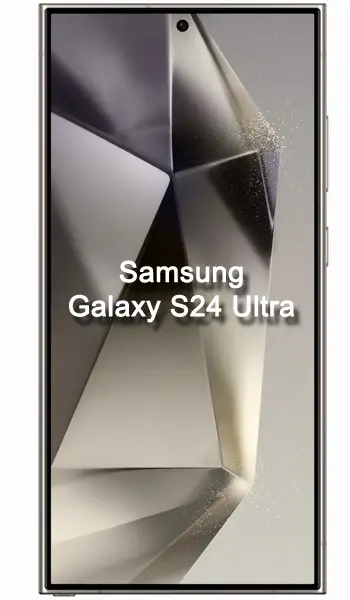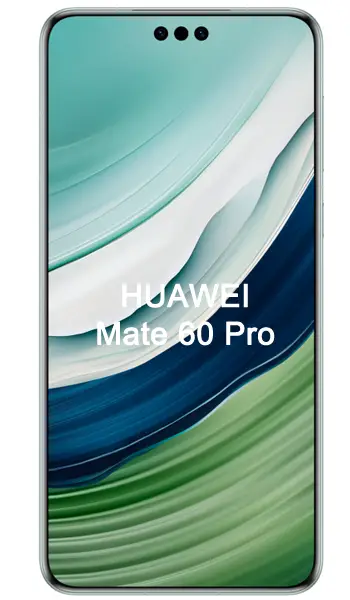Samsung Galaxy S24 Ultra vs Huawei Mate 60 Pro Comparison and Differences
Smartphone 1

Samsung Galaxy S24 Ultra
Smartphone 2

Huawei Mate 60 Pro
Smartphone 3
Differences between Samsung Galaxy S24 Ultra and Huawei Mate 60 Pro - Which to Choose?
Reasons to consider the Samsung Galaxy S24 Ultra:
- Higher resolution main camera at 200 MP compared to 50 MP, offering potentially better photo quality.
- Dynamic LTPO AMOLED 2X display technology that could provide better color accuracy and battery efficiency.
- Higher resolution display at 1440 x 3120 pixels which results in a higher pixel density of 505 ppi.
- More advanced connectivity with Wi-Fi 802.11 a/b/g/n/ac/6e/7 support and Bluetooth 5.3.
- Additional features such as Samsung DeX for desktop experience and UWB (Ultra Wideband) support for precise location tracking.
- Higher maximum brightness of the display at 2600 nits (peak), which is beneficial for outdoor use.
- Higher AnTuTu v10 total score indicating potentially better overall performance.
- Corning Gorilla Glass Armor screen protection which may offer enhanced durability.
- Higher capacity fast-charging at 45W and includes reverse wireless charging capabilities.
Reasons to consider the Huawei Mate 60 Pro:
- Lower price point at 890 EUR, making it potentially more cost-effective.
- HarmonyOS 4.0 (China) may offer a unique user interface and experience for users looking for alternatives to mainstream Android devices.
- Supports expandable storage via NM (Nano Memory) card up to 256GB, offering more flexibility for storage.
- Dual SIM hybrid slot allows for either two SIM cards or one SIM card and a memory card simultaneously.
- Improved durability with IP68 dust/water resistant rating for up to 6 meters for 30 mins.
- Higher wattage fast charging at 88W and stronger wireless charging capabilities at 50W.
- Includes an infrared port that can be used as a universal remote control for various appliances.
- Features a form of face recognition biometric security with a TOF 3D sensor.
Samsung Galaxy S24 Ultra or Huawei Mate 60 Pro Specs Comparison
or
 Common specs
Common specs
| Brand and model | Samsung Galaxy S24 Ultra | Huawei Mate 60 Pro | |
| Rating | (+0) | (+0) | |
| Release date | 2024, January 17 | 2023, August 29 | |
| Dimensions (HxWxD) | 162.3 x 79 x 8.6 mm | 6.39 x 6.39 x 3.11 in | 163.7 x 79 x 8.1 mm | 6.44 x 6.44 x 3.11 in | |
| Weight | 232 g | 8.18 oz | 225 g | 7.94 oz | |
| Body Build | Glass front (Gorilla Glass Armor), glass back (Gorilla Glass), titanium frame | Glass front, aluminum frame, glass back | |
| Case | buy from Amazon | buy from Amazon | |
| Colors | Titanium Black, Titanium Gray, Titanium Violet, Titanium Yellow, Titanium Blue, Titanium Green, Titanium Orange | Black, White, Green, Purple | |
| Battery | 5000 mAh, Li-Ion, non-removable | 5000 mAh, Li-Po, non-removable | |
| Approximate price | 1200 EUR | 890 EUR | |
| Check price | from Amazon | from Amazon |
 Screen
Screen
| Technology | Dynamic LTPO AMOLED 2X | LTPO OLED | |
| Touchscreen | capacitive touchscreen | capacitive touchscreen | |
| Display colors | 16M | 1B | |
| Screen size | 6.8" in | 6.82" in | |
| Screen area | 113.5 cm2 | 114.4 cm2 | |
| Screen format | 19.5:9 (height:width) | 19.5:9 (height:width) | |
| Screen to body ratio | 88.5% | 88.5% | |
| Screen resolution | 1440 x 3120 px | 1260 x 2720 px | |
| Screen PPI /points per inch/ | 505 PPI | 440 PPI | |
| Screen protection | Corning Gorilla Glass Armor | Huawei Kunlun Glass 2 | |
| Other specs | - 120Hz, HDR10+, 2600 nits (peak) -Always-on display |
- 120Hz | |
| Screen protector | buy from Amazon | buy from Amazon |
 Camera and Video
Camera and Video
| Rear camera, main | 200 MP, Quad | 50 MP, Triple | |
| Camera specs | -200 MP, f/1.7, 24mm (wide), 1/1.3", 0.6µm, multi-directional PDAF, Laser AF, OIS -10 MP, f/2.4, 67mm (telephoto), 1/3.52", 1.12µm, PDAF, OIS, 3x optical zoom -50 MP, f/3.4, 111mm (periscope telephoto), 1/2.52", 0.7µm, PDAF, OIS, 5x optical zoom -12 MP, f/2.2, 13mm, 120˚ (ultrawide), 1/2.55", 1.4µm, dual pixel PDAF, Super Steady video |
-50 MP, f/1.4-f/4.0, 24mm (wide), PDAF, Laser AF, OIS -48 MP, f/3.5, 90mm (periscope telephoto), PDAF, OIS, 3.5x optical zoom -12 MP, f/2.2, 13mm, 120˚ (ultrawide), PDAF |
|
| Functions | LED flash, auto-HDR, panorama | LED flash, panorama, HDR | |
| Video | 8K@24/30fps, 4K@30/60/120fps, 1080p@30/60/240fps, HDR10+, stereo sound rec., gyro-EIS | 4K@30/60fps, 1080p@30/60/120/240/480fps, 720p@960fps, 720p@3840fps, HDR, gyro-EIS | |
| DxOMark Main Score | 144 | ||
| DxOMark Photo | 144 | ||
| DxOMark Video | 137 | ||
| Front camera, selfie | 12 MP, Single | 13 MP, Single | |
| Specifications | 12 MP, f/2.2, 26mm (wide), dual pixel PDAF | 13 MP, f/2.4, 18mm (ultrawide) TOF 3D, (depth/biometrics sensor) |
|
| Functions | Dual video call, Auto-HDR, HDR10+ | HDR, panorama | |
| Video | 4K@30/60fps, 1080p@30fps4K@30/60fps, 1080p@30fps | 4K@30/60fps, 1080p@30/60/240fps |
 Performance
Performance
| Operating system - OS | Android 14, One UI 6.1 | HarmonyOS 4.0 (China) | |
| Chipset | - Qualcomm SM8650-AC Snapdragon 8 Gen 3 (4 nm) | - Kirin 9000S (7 nm) | |
| CPU | - 8-core (1x3.39GHz Cortex-X4 & 3x3.1GHz Cortex-A720 & 2x2.9GHz Cortex-A720 & 2x2.2GHz Cortex-A520) | - Octa-core (1x2.62 GHz Taishan Big & 3x2.15 GHz Taishan Mid & 4x1.53GHz Cortex-A510) | |
| GPU | Adreno 750 (1 GHz) | Maleoon 910 MP4 | |
| External memory | No | NM (Nano Memory), up to 256GB (uses shared SIM slot) | |
| Internal memory | 256GB 12GB RAM, 512GB 12GB RAM, 1TB 12GB RAM | 256GB 12GB RAM, 512GB 12GB RAM, 1TB 12GB RAM |
 Benchmark
Benchmark
| Antutu 10 Total | 1523833 | ||
| Antutu 10 CPU | 452123 | ||
| Antutu 10 GPU | 374852 | ||
| Antutu 10 Mem | 386963 | ||
| Antutu 10 UX | 452123 | ||
| Antutu 9 Total | 769211 | ||
| GeekBench 6 Single Core | 2267 | ||
| GeekBench 6 Multi Core | 7085 | ||
| GeekBench 5 Single Core | 1044 | ||
| GeekBench 5 Multi-Core | 3897 |
 Communication and Connectivity
Communication and Connectivity
| SIM card | Nano-SIM and eSIM or Dual SIM (2 Nano-SIMs and eSIM, dual stand-by) | Hybrid Dual SIM (Nano-SIM, dual stand-by) | |
| Network | GSM / CDMA / HSPA / EVDO / LTE / 5G | GSM / CDMA / HSPA / CDMA2000 / LTE / 5G | |
| Bands | -2G - GSM 850 / 900 / 1800 / 1900 - SIM 1 & SIM 2 (Dual SIM model only) CDMA 800 / 1900 & TD-SCDMA -3G - HSDPA 850 / 900 / 1700(AWS) / 1900 / 2100 CDMA2000 1xEV-DO -4G - 1, 2, 3, 4, 5, 7, 8, 12, 13, 17, 18, 19, 20, 25, 26, 28, 32, 38, 39, 40, 41, 66 - International -5G - 1, 2, 3, 5, 7, 8, 12, 20, 25, 26, 28, 38, 40, 41, 66, 75, 77, 78 SA/NSA/Sub6 - International SA/NSA/Sub6/mmWave - USA |
-2G - GSM 850 / 900 / 1800 / 1900 - SIM 1 & SIM 2 CDMA 800 -3G - HSDPA 800 / 850 / 900 / 1700(AWS) / 1900 / 2100 CDMA2000 1x -4G - LTE -5G - SA/NSA |
|
| Speed | HSPA, LTE-A (up to 7CA), 5G | HSPA, LTE-A, 5G | |
| GPRS | Yes | Yes | |
| Edge | Yes | Yes | |
| Wi-Fi | Wi-Fi 802.11 a/b/g/n/ac/6e/7, tri-band, Wi-Fi Direct | Wi-Fi 802.11 a/b/g/n/ac/6, dual-band, Wi-Fi Direct | |
| GPS | GPS, GLONASS, BDS, GALILEO, QZSS | GPS (L1+L5), GLONASS (L1), BDS (B1I+B1c+B2a+B2b), GALILEO (E1+E5a+E5b), QZSS (L1+L5), NavIC (L5) | |
| NFC | Yes | Yes | |
| USB | USB Type-C 3.2, DisplayPort 1.2, OTG | USB Type-C 3.1, OTG, DisplayPort 1.2 | |
| Bluetooth | 5.3, A2DP, LE | 5.2, A2DP, LE | |
| Harmful irradiation |
SAR - 1.26 W/kg (head) 0.62 W/kg (body) SAR EU - 1.06 W/kg (head) 1.30 W/kg (body) |
 Music and Audio
Music and Audio
| Radio | No | No | |
| Headphone jack | No | No | |
| Others | - 32-bit/384kHz audio -Tuned by AKG |
- 32-bit/384kHz audio |
 Other features
Other features
| Sensors | - Fingerprint (under display, ultrasonic), accelerometer, gyro, proximity, compass, barometer | - Face ID, fingerprint (under display, optical), accelerometer, gyro, proximity, barometer, compass, color spectrum , Infrared port | |
| Other extras |
- Samsung DeX, Samsung Wireless DeX (desktop experience support) -Ultra Wideband (UWB) support - 45W Fast charging, Power Delivery 3.0, 65% in 30 min -15W Wireless charging (Qi/PMA) -4.5W Reverse wireless charging - IP68 dust/water resistant (up to 1.5m for 30 min) -Stylus (Bluetooth integration, accelerometer, gyro) |
- BDS Satellite Calling and Message - 88W Fast charging, 100% in 30 min -50W Wireless charging -20W Reverse wireless charging - IP68 dust/water resistant (up to 6m for 30 min) |
Reviews and Opinions on Samsung Galaxy S24 Ultra and Huawei Mate 60 Pro
If you had to recommend one of these phones to a friend, which one would it be and why? Share your arguments using the Add Opinion button!

